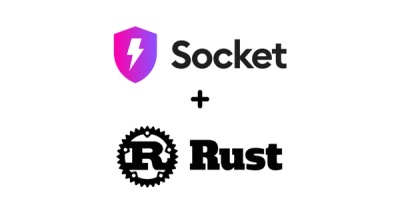
Research
/Security News
Critical Vulnerability in NestJS Devtools: Localhost RCE via Sandbox Escape
A flawed sandbox in @nestjs/devtools-integration lets attackers run code on your machine via CSRF, leading to full Remote Code Execution (RCE).
This is a library for node.js for compiling mortup to HTML. The reason I've made it is that while Markdown is nice enough, it does have some issues which I dislike.
Install: npm install mortup
Use:
var mortup = require("mortup");
console.log(mortup("Some *mortup* text", {
allow_unsanitized: false
}));
Here are the features with Markdown which annoy me, and the reasons I decided to create my own format.
__something__ and **something** creates strong text (bold), while both _something_ and *something* creates emphasized text (italics). I find this to be redundant and silly, and decided to make *something* strong, //something// emphasized, and _something_ underlined.[Some link text](http://example.com). I find that to be backwards. In text, citations are often in brackets, and even Markdown's footnotes use brackets. Therefore, I made the link syntax (Some link text)<http://example.com>. The new image syntax is !(Some alt text)<http://example.com/image.png>.<br> anywhere the page breaks. I know there are some people who disagree with this, but I feel that it's a decent solution, and more intuitive than what Markdown does.<textarea>, which is one of the main places in which Markdown is used. The other is to use code in ```, which I think is a better solution, but Markdown's implementation has been fiddly in my exprience. For example, you can't have a code block with a non-empty line directly above it. I have simplified all of this by just always having blocks of ``` generate <pre><code>...</code></pre>.!!!!. If the allow_unsanitized: true option is passed to the parser, everything inside of blocks surrounded by !!!! will be taken as-is, not going through the markdown parser, and not sanitized.Here's a small rundown of all the features in the language.
This line has *bold* words, and it has //italized// words. It even has _underlined_ words.
This line has <strong>bold</strong> words, and it has <em>italized</em> words. It even has <u>underlined</u> words.<br>
This line contains `code`.
This line contains <code>code</code>.<br>
This line contains (a link)<https://github.com/mortie/mortup>.
And this contains an image: !(an image)<http://example.com/pic.png>
This line contains <a href="https://github.com/mortie/mortup">a link</a>.<br>
And this contains an image: <img src="http://example.com/pic.png><br>
* Here we have a bullet list.
* It can have *many* elements.
<ul>
<li>Here we have a bullet list.</li>
<li>It can have <strong>many</strong> elements.</li>
</ul>
1. This is a sorted, or ordered, list.
2. It has ordered elements.
9. Elements don't have to be sequential, however.
<ol start="1">
<li>This is a sorted, or ordered, list.</li>
<li value="2">It has ordered elements.</li>
<li value="9">Elements don't have to be sequential, however.</li>
</ol>
```
This is a code block.
Things won't *be bold* or _italized_ here.
if (this.is(neat))
{
dance();
}
```
<pre><code>
This is a code block.
Things won't *be bold* or _italized_ here.
if (this.is(neat))
{
dance();
}
</code></pre>
``` javascript
This code block is javascript.
console.log("hi");
```
<pre><code data-language="javascript">
This code block is javascript.
console.log("hi");
</code></pre>
This is just some general text.
It has some newlines.
It has *multiple* newlines.
This is just some general text.<br>
It has some newlines.<br>
It has <strong>multiple</strong> newlines.<br>
This is a very long continuous line of text. It relies on soft wrapping. No <br> tags will automatically be inserted, it is up to the HTML renderer to break the text wherever it sees fit.
This is a very long continuous line of text. It relies on soft wrapping. No <br> tags will automatically be inserted, it is up to the HTML renderer to break the text wherever it sees fit.<br>
>>>
This is a blockquote.
We can have *all kinds* of formatting here.
```
Even code!
```
>>>
<blockquote>
This is a blockquote.<br>
We can have <strong>all kinds</strong> of formatting here.
<pre><code>
Even code!
</pre></code>
</blockquote>
Most of the time, you want safe <div>sanitized HTML</div>.
However, you may need unsanitized HTML sometimes:
!!!!
<script>alert("I can do whatever I want now.")</script>
<div>It doesn't *care* about formatting either.</div>
!!!!
Most of the time you want safe <div>sanitized HTML<div>.<br>
However, you may need unsanitized HTML sometimes:<br>
<script>alert("I can do whatever I want now.")</script>
<div>It doesn't even *care* about formatting either.</div>
The MIT License (MIT)
Copyright (c) 2015 Martin Dørum Nygaard
Permission is hereby granted, free of charge, to any person obtaining a copy of this software and associated documentation files (the "Software"), to deal in the Software without restriction, including without limitation the rights to use, copy, modify, merge, publish, distribute, sublicense, and/or sell copies of the Software, and to permit persons to whom the Software is furnished to do so, subject to the following conditions:
The above copyright notice and this permission notice shall be included in all copies or substantial portions of the Software.
THE SOFTWARE IS PROVIDED "AS IS", WITHOUT WARRANTY OF ANY KIND, EXPRESS OR IMPLIED, INCLUDING BUT NOT LIMITED TO THE WARRANTIES OF MERCHANTABILITY, FITNESS FOR A PARTICULAR PURPOSE AND NONINFRINGEMENT. IN NO EVENT SHALL THE AUTHORS OR COPYRIGHT HOLDERS BE LIABLE FOR ANY CLAIM, DAMAGES OR OTHER LIABILITY, WHETHER IN AN ACTION OF CONTRACT, TORT OR OTHERWISE, ARISING FROM, OUT OF OR IN CONNECTION WITH THE SOFTWARE OR THE USE OR OTHER DEALINGS IN THE SOFTWARE.
FAQs
A simple markup language.
We found that mortup demonstrated a not healthy version release cadence and project activity because the last version was released a year ago. It has 1 open source maintainer collaborating on the project.
Did you know?

Socket for GitHub automatically highlights issues in each pull request and monitors the health of all your open source dependencies. Discover the contents of your packages and block harmful activity before you install or update your dependencies.

Research
/Security News
A flawed sandbox in @nestjs/devtools-integration lets attackers run code on your machine via CSRF, leading to full Remote Code Execution (RCE).

Product
Customize license detection with Socket’s new license overlays: gain control, reduce noise, and handle edge cases with precision.

Product
Socket now supports Rust and Cargo, offering package search for all users and experimental SBOM generation for enterprise projects.